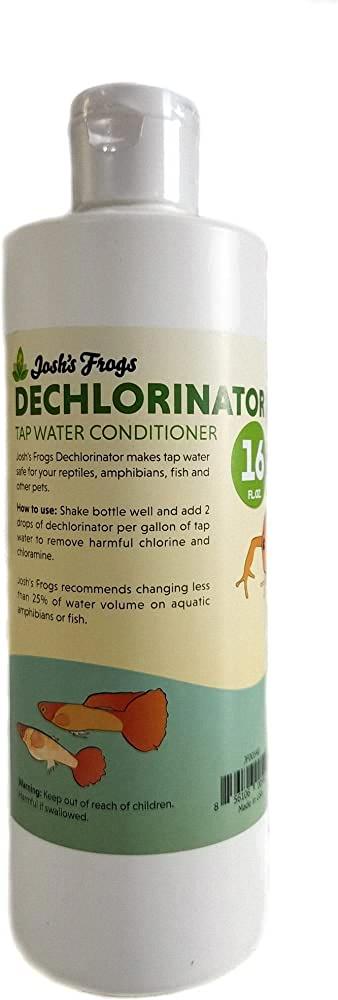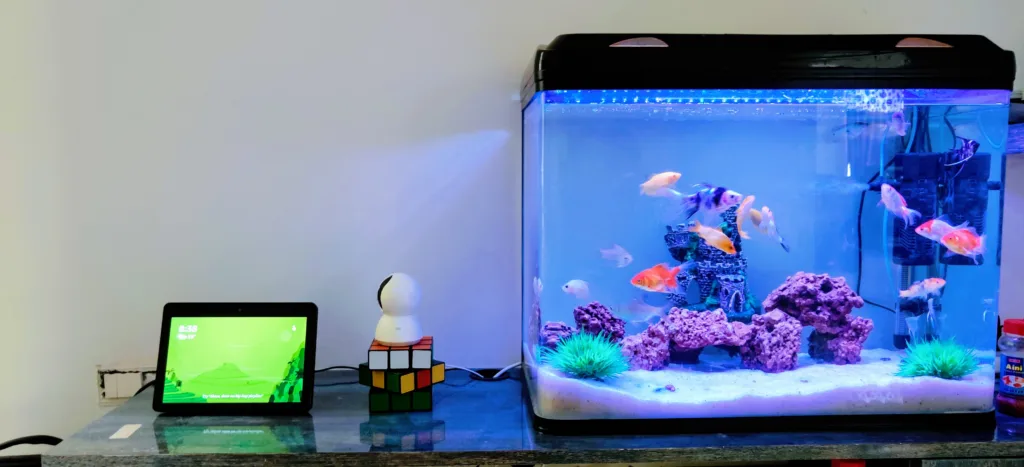Tap water is the most common source of drinking water for people around the world. It is convenient and easily accessible, but it is also treated with chemicals such as chlorine to kill harmful bacteria and viruses. While chlorine is necessary to make tap water safe for consumption, it can also have negative effects on the taste and smell of the water. Fortunately, there are several ways to dechlorinate tap water and improve its quality.
Boiling
One of the easiest ways to dechlorinate tap water is to boil it. Boiling water for 15 minutes will release all the chlorine from tap water. At room temperature, chlorine gas weighs less than air and will naturally evaporate off without boiling. However, heating up water to a boil will speed up the chlorine removal process. Water needs to sit for a minimum of 24 hours to dechlorinate. It can actually take almost 5 days for chlorine to evaporate completely from the water, depending on the initial concentration of the chlorine and the total volume of water.
Vitamin C
Two forms of vitamin C, ascorbic acid, and sodium ascorbate, will neutralize chlorine. All you have to do is add the vitamin C to the water and let it sit for a few minutes. The chlorine will then be neutralized and the water will be safe to drink. This method is particularly useful for those who are loking for a quick and easy way to dechlorinate their water.
Activated Carbon Filters
Activated carbon filters are a popular way to dechlorinate tap water. These filters work by adsorbing the chlorine and other impurities from the water. The activated carbon filters can be attached to your faucet or installed as part of your home’s water filtration system. They are an effective way to remove chlorine from tap water, as well as other harmful chemicals and contaminants.
Tap water is treated with chlorine to make it safe for consumption, but it can have negative effects on the taste and smell of the water. Fortunately, there are several ways to dechlorinate tap water and improve its quality. Boiling, adding vitamin C, and using activated carbon filters are all effective methods for removing chlorine from tap water. It is important to choose the method that works best for your needs and preferences. By taking steps to dechlorinate your tap water, you can enjoy cleaner, better-tasting water that is safe to drink.
Removing Chlorine From Tap Water Naturally
Chlorine is a common disinfectant used in tap water treatment to kill harmful bacteria and viruses that may cause waterborne diseases. Although chlorine is safe for human consumption at low levels, some people may be sensitive to its taste and odor. In this article, we will discuss several natural methods to remove chlorine from tap water.
1. Let it sit: One of the easiest ways to remove chlorine from tap water is to let it sit exposed to air for a few hours. Chlorine is a gas that evaporates at room temperature, and by letting the water sit, the chlorine will naturally dissipate.
2. Boiling: Boiling water for 15 minutes is anoher effective method to remove chlorine. Heating up the water to a boil will speed up the chlorine removal process.
3. Vitamin C: Adding a small amount of vitamin C to tap water can neutralize chlorine. Vitamin C is a natural dechlorination agent and can be purchased in tablet form at health food stores.
4. Activated charcoal: Activated charcoal filters can remove chlorine and other impurities from tap water. These filters are available as countertop pitchers or faucet attachments.
5. Sunlight: Exposing tap water to sunlight for several hours can also remove chlorine. Ultraviolet (UV) rays from the sun can break down chlorine into harmless compounds.
There are several natural methods to remove chlorine from tap water. Letting it sit, boiling, adding vitamin C, using activated charcoal filters, and exposing it to sunlight are all effective ways to reduce chlorine levels in tap water.

Source: amazon.com
The Time Required for Tap Water to Dechlorinate
When it comes to tap water, it is important to understand that it is treated with chlorine to kill bacteria and other harmful microorganisms. However, chlorine can also be harmful to fish and aquatic plants, so it is necessary to dechlorinate tap water before using it in an aquarium or pond.
The process of dechlorination involves allowing the water to sit for a certain amount of time to allow the chlorine to evaporate. The length of time required for complete dechlorination can vary depending on several factors.
The initial concentration of chlorine in the water is one of the most important factors. If the water has a high concentration of chlorine, it will take longer for the chlorine to evaporate. Similarly, if the water has a low concentration of chlorine, it will take less time for dechlorination to occur.
In addition to the initial concentration of chlorine, the total volume of water also plays a role in dechlorination. Larger volumes of water will require more time for the chlorine to evaporate, while smaller volumes will dechlorinate more quickly.
As a general rule, it is recommended to allow tap water to sit for at lest 24 hours before using it in an aquarium or pond. This will ensure that most of the chlorine has evaporated, and the water is safe for fish and aquatic plants.
However, for complete dechlorination, it can take up to 5 days for chlorine to evaporate completely from the water. Therefore, it is important to monitor the chlorine levels in the water before adding fish or plants to ensure that the water is safe for them.
The time required for tap water to dechlorinate can vary depending on the initial concentration of chlorine and the total volume of water. While it is generally safe to use tap water after 24 hours, it can take up to 5 days for complete dechlorination to occur.
Neutralizing Chlorine in Tap Water
Chlorine is a common disinfectant used in tap water to eliminate harmful bacteria and viruses. While it serves a crucial purpose, the presence of chlorine in tap water can sometimes give an unpleasant taste and smell. Moreover, chlorine can also cause skin irritation and other health problems in some people.
Fortunately, there are several ways to neutralize chlorine in tap water. One of the most effective methods is to use vitamin C. Ascorbic acid and sodium ascorbate, two forms of vitamin C, can effectively neutralize chlorine in tap water.
Here’s how it works: Chlorine is a powerful oxidant, which means it can easily react with other chemicals in the water. Vitamin C, on the other hand, is a powerful reducing agent, meaning it can donate electrons to neutralize the oxidizing effect of chlorine.
To neutralize chlorine in tap water, you can use vitamin C in the following ways:
– Add a few drops of lemon juice or orange juice to your tap water. Both lemon and orange are high in vitamin C and can help to neutralize chlorine.
– Use a vitamin C shower filter. These filters contain ascorbic acid, and they can effectively remove chlorine from the water while you shower.
– Use a vitamin C tablet or powder. You can dissolve vitamin C tablets or powder in your tap water to neutralize chlorine. Be sure to follow the instructions on the package for the correct dosage.
Vitamin C in the form of ascorbic acid and sodium ascorbate can effectively neutralize chlorine in tap water. By using vitamin C, you can enjoy clean, fresh-tasting water without the negative effects of chlorine.
Dechlorinating Tap Water for a Fish Tank
Dechlorinating tap water is a crucial step in setting up a fish tank. Chlorine in tap water can be harmful to fish and other aquatic life, and it’s important to remove it before adding water to the tank. Fortunately, there are several ways to dechlorinate tap water for a fish tank.
One of the easiest and most effective ways to dechlorinate tap water is by boiling it. Boiling tap water for 8 to 10 minutes will cause the chlorine to evaporate from it. This process is best for around 10 gallons of water, but if you’re boiling more at one time, you might need to raise these numbers to 15 or 20 minutes. After boiling, let the water cool to room temperature before adding it to the fish tank.
Another method for dechlorinating tap water is to use a water conditioner specifically designed for aquarium use. These products are available at most pet stores and are easy to use. Simply add the recommended amount of conditioner to the water, stir well, and let it sit for a few minutes before adding it to the fish tank. Water conditioners not only dechlorinate tap water but also neutralize harmful chemicals and heavy metals that may be present.
Activated carbon is also an effective dechlorinating agent. This substance can be added to the fish tank’s filter, which will help remove chlorine from the water as it passes through. However, it’s important to replace the activated carbon regularly to ensure it continues to work effectively.
Dechlorinating tap water for a fish tank is an essential step in ensuring the health and well-being of your aquatic pets. Boiling the water, usig a water conditioner, or adding activated carbon to the filter are all effective methods for removing chlorine from tap water. By taking the time to dechlorinate your tap water, you can help ensure a happy and healthy environment for your fish.

Conclusion
Tap water is an essential resource that we use every day, whether it is for drinking, cooking, or cleaning. It is important to ensure that the water we consume is safe and free from harmful substances, such as chlorine. Boiling tap water is one effective way to remove chlorine, but it can take up to five days for chlorine to evaporate completely from water. Another effective method is to use vitamin C, whch neutralizes chlorine in the water.
It is important to note that tap water quality can vary depending on location, and it is essential to test the water regularly to ensure that it is safe for consumption. Additionally, it is recommended to use a water filtration system to remove any potential contaminants from the water.
Tap water is a valuable resource that we should take care of, and it is essential to take the necessary steps to ensure its safety and quality. By following these steps, we can enjoy clean and safe water for our daily needs.
